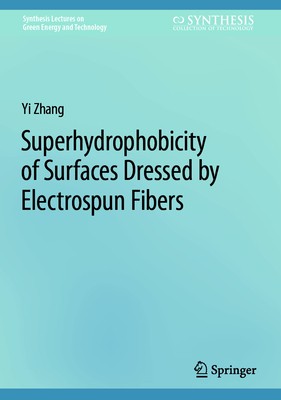
- Mēs nosūtīsim 10-14 darba dienu laikā.
- Extra -10% atlaide, ievadot kodu: EXTRA
Superhydrophobicity of Surfaces Dressed by Electrospun Fibers + bezmaksas piegāde! | Bookbook.lv
Atsauksmes
Apraksts
This book provides insights into the wetting behavior on fiber-dressed surfaces and guidelines for developing superhydrophobicity based on electrospinning. In developing superhydrophobicity, electrospinning possesses the following advantages over other fabrication techniques. First, the electrospun micro- and nanofibers, which may also featured with secondary fiber morphology, provide sufficient surface roughness for superhydrophobicity. Second, electrospinning is considered an additive manufacturing technique, so the surfaces to be modified are not destroyed for superhydrophobicity. Third, the introduced electrospun structure is featured with high porosity with inter-fiber pores, allowing for a high vapor transmission rate, which is necessary in many applications such as wound dressing, gas sensor.However, books focused on developing superhydrophobicity using electrospinning are rarely found. Electrospinning is only introduced as one section in most superhydrophobicity-related books, and the mechanism of superhydrophobicity by different electrospinning-based methods lacks detailed explanation.
10 EXTRA % atlaide
Kupona kods: EXTRA
Akcija beidzas 7d.00:00:26
Atlaides kods derīgs pirkumiem no 10 €. Atlaides nav kumulatīvas.
Derīgs tikai pirkumiem tiešsaistē.

- Autors: Yi Zhang
- Izdevējs Springer
- ISBN-10: 3031555511
- ISBN-13: 9783031555510
- Formāts 17.5 x 24.6 x 1.2 cm, kieti viršeliai
- Valoda: Anglų
This book provides insights into the wetting behavior on fiber-dressed surfaces and guidelines for developing superhydrophobicity based on electrospinning. In developing superhydrophobicity, electrospinning possesses the following advantages over other fabrication techniques. First, the electrospun micro- and nanofibers, which may also featured with secondary fiber morphology, provide sufficient surface roughness for superhydrophobicity. Second, electrospinning is considered an additive manufacturing technique, so the surfaces to be modified are not destroyed for superhydrophobicity. Third, the introduced electrospun structure is featured with high porosity with inter-fiber pores, allowing for a high vapor transmission rate, which is necessary in many applications such as wound dressing, gas sensor.However, books focused on developing superhydrophobicity using electrospinning are rarely found. Electrospinning is only introduced as one section in most superhydrophobicity-related books, and the mechanism of superhydrophobicity by different electrospinning-based methods lacks detailed explanation.

Atsauksmes